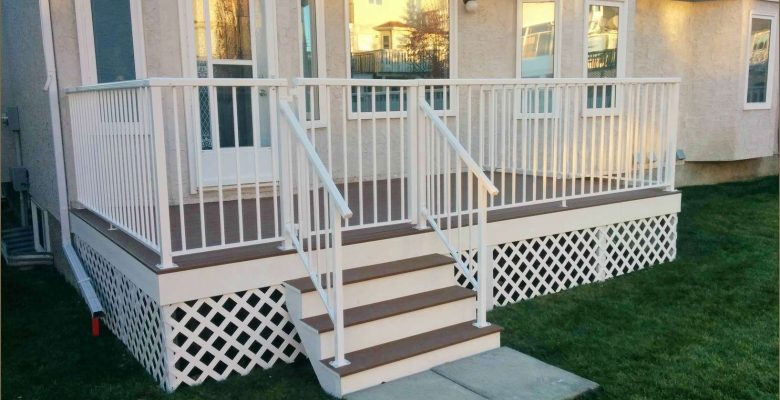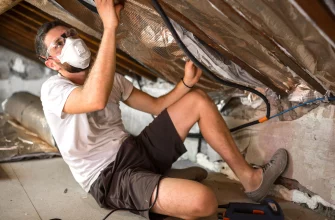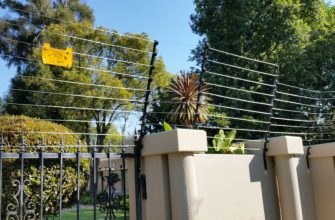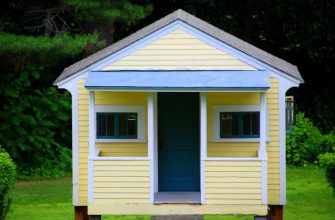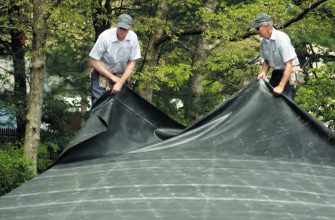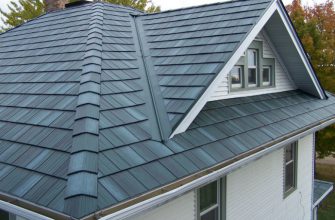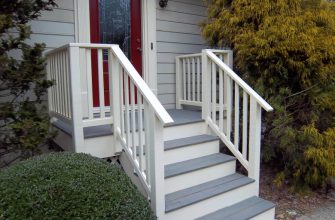Outdoor handrails serve a critical safety function for mobile homes. They provide stability and support when navigating exterior stairs, ramps, and porches. Properly installed handrails that meet safety standards can prevent costly and dangerous falls, especially for more vulnerable residents like children and seniors.
This comprehensive guide will cover everything you need to know about outfitting your mobile home with safe, customized outdoor handrails. We’ll explore handrail options, regulations, proper installation, maintenance, upgrades, and more. Equipping your home’s exterior access areas with secure and reliable handrails is one of the smartest investments you can make.
- Understanding the Importance of Outdoor Handrails
- Overview of Safety Standards and Regulations for Outdoor Handrails
- Choosing the Right Handrail for Your Mobile Home
- Types of Handrails for Outdoor Use
- Factors to Consider When Selecting Handrail Materials
- Customizing Handrails for Specific Needs
- Installing Outdoor Handrails
- Measuring and Marking for Proper Installation
- Step-by-Step Guide for Installing Prefabricated DIY Handrail Kits
- Tips for Installing Handrails on Different Surfaces (e.g., wood, concrete)
- Maintaining and Upgrading Outdoor Handrails
- Regular Maintenance Practices for Longevity and Safety
- Upgrading Handrails for Enhanced Aesthetics and Functionality
- Troubleshooting Common Issues with Outdoor Handrails
- Exploring Further Options for Customizing and Upgrading Handrails
- Final Thoughts on Enhancing Safety with Outdoor Handrails
Understanding the Importance of Outdoor Handrails
Outdoor handrails provide the following key benefits:
- Prevent falls and injuries on stairs, ramps, and porches.
- Offer stability for balance when navigating uneven terrain.
- Provide support during inclement weather like rain, snow, and ice.
- Help residents with limited mobility or disabilities access the home.
- Can be designed for both form and function to complement home aesthetics.
Considering factors like potential weather conditions, visibility issues at night, and resident ages and abilities will help determine optimal handrail placement and customization.
Overview of Safety Standards and Regulations for Outdoor Handrails
To promote safety, building codes and regulations outline requirements for the height, diameter, spacing, extension, and strength of outdoor handrails. Key standards include:
- Top rails should measure 36-38 inches above the leading edge.
- Handrails should have a graspable circular cross-section of 1 1/4 – 2 inches in diameter.
- Balusters, spindles, or infill should not allow passage of a 4-inch sphere.
- Handrails should be able to withstand a 200-pound point load.
- Handrails should return to walls, guards, or landing surfaces.
Consult your local building codes for specifics. Licensed contractors can also advise on customization to meet required standards.
Choosing the Right Handrail for Your Mobile Home
Types of Handrails for Outdoor Use
Common types of handrails suitable for mobile homes include:
- Wood handrails – Classic look, available in diverse wood types.
- Metal handrails – Wrought iron, aluminum, stainless steel options.
- Plastic/composite handrails – Affordable, low maintenance, long-lasting.
- Glass handrails – Contemporary style, enhances outdoor views.
Factors to Consider When Selecting Handrail Materials
When choosing handrail materials, consider:
- Durability for weather resistance.
- Texture for optimal grip and hand traction.
- Appearance to complement your home’s style.
- Ease of maintenance for cleaning and upkeep.
- Budget for affordability of materials and installation.
Customizing Handrails for Specific Needs
Beyond standard prefabricated options, handrails can be customized with:
- Decorative posts, brackets, and balusters.
- Contrasting multi-tone designs and finishes.
- Personalized engraving or ornamental detailing.
- Lighting for improved nighttime visibility.
- Extensions, returns, and angled segments on stairs.
Consult designers and contractors to create one-of-a-kind handrails tailored to your mobile home’s style and functional needs.
Installing Outdoor Handrails
Measuring and Marking for Proper Installation
Carefully measure and mark areas needing handrails, noting:
- Mounting surface material (wood, concrete, etc.).
- Height and width of stairs, porch, or ramp.
- Spacing between baluster infill, posts, and brackets.
- Overhang for returns and extensions.
Transfer measurements accurately to handrails before cutting, drilling, or mounting. Check alignments and confirm everything is straight, level, and square.
Step-by-Step Guide for Installing Prefabricated DIY Handrail Kits
When installing prefab handrail kits:
- Prepare and measure surface area.
- Assemble modular handrail components like balusters and infill.
- Attach mounting plates, posts, and newel posts with proper anchors.
- Secure top rail caps and slide on baluster infill.
- Test stability and integrity by applying pressure along entire rail.
Tips for Installing Handrails on Different Surfaces (e.g., wood, concrete)
On wood surfaces, use lag screws and construction adhesive. On concrete, use masonry drill bits and sleeve anchors. When mounting on other surfaces, utilize specialized anchors and compatible fasteners.
Pre-drilling holes makes fastening easier. Follow manufacturer guidelines for pilot hole sizing. Take care not to split wood surfaces when drilling or screwing.
Maintaining and Upgrading Outdoor Handrails
Regular Maintenance Practices for Longevity and Safety
To maintain handrails:
- Inspect regularly for damage, wear, or loose fittings.
- Check anchors and connections to ensure stability.
- Clean surface and apply protective finishes if needed.
- Make any necessary repairs immediately for safety.
Upgrading Handrails for Enhanced Aesthetics and Functionality
For upgrades, consider:
- New baluster infill featuring decorative cut-outs or patterns.
- Accent lighting for style and improved visibility.
- Replacing wood top rails with sleek metal or glass.
- Extending length for wider stairs or additional access points.
Troubleshooting Common Issues with Outdoor Handrails
Address problems like:
- Loose or unstable fittings with shims, glue, or new anchors.
- Warping or rotting wood with wood filler, sanding, or replacement.
- Rusting metal with sanding, priming, and new protective finish.
- Difficulty grasping handrail with new grip tape or non-slip coating.
Consult contractors for repairs beyond basic DIY fixes. Prioritize any issues threatening handrail stability and strength.
Exploring Further Options for Customizing and Upgrading Handrails
Beyond the basics, today’s handrail options let you integrate modern materials and technologies to amplify aesthetics, functionality, and safety. Explore taking your outdoor access a step further with features like:
- Smart handrails with integrated lighting, grip sensors, and remote monitoring.
- Glass panel infill for contemporary style with unobstructed outdoor views.
- Ergonomic shapes and contrasting colors for accessibility and visibility.
- Heated handrails to melt snow and ice in cold climates.
- Handrails with built-in storage, planters, or charging stations.
Consult designers and contractors to incorporate specialized railings that align with your mobile home’s architecture and needs. The right custom handrails can provide the perfect finishing touch.
Final Thoughts on Enhancing Safety with Outdoor Handrails
Installing secure and reliable outdoor handrails is one of the best ways to protect your mobile home and prevent dangerous falls. Take time to properly measure and customize handrails to complement your home’s exterior access areas.
Utilize quality materials suited for outdoor use and your local climate. Follow safety codes and manufacturer guidelines for optimal mounting and stability. Perform regular inspection and maintenance to keep handrails in top condition.
Upgrading aged or damaged handrails guarantees sturdiness and gives your home a style boost. Your investment in customized, long-lasting outdoor handrails pays dividends in enhanced safety, easier access, and added curb appeal.

